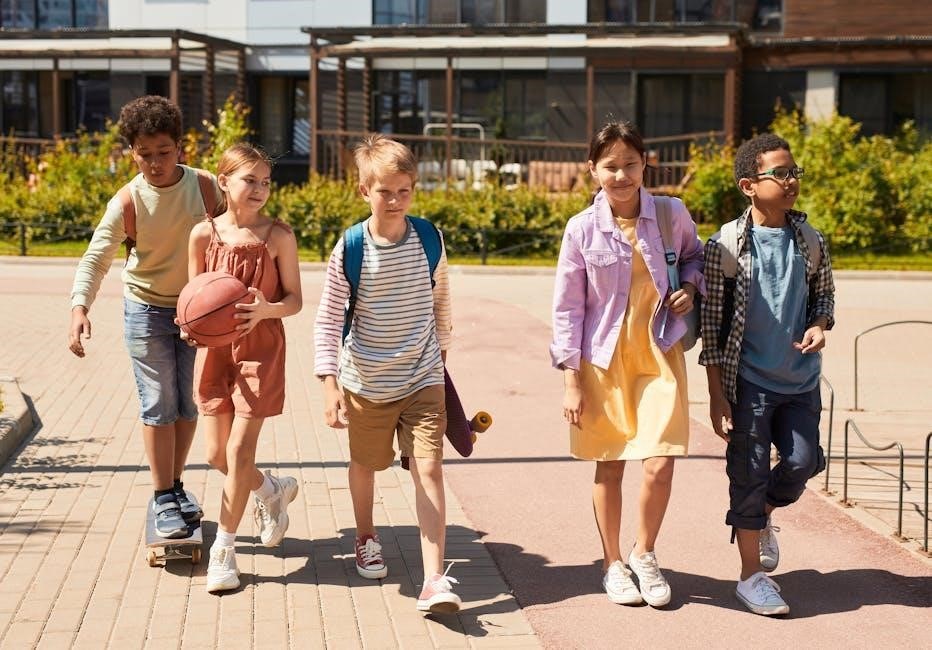Active shooter preparedness is critical for high schools to ensure student and staff safety․ This guide provides strategies and best practices to address potential threats and foster a secure learning environment․
1․1 The Importance of Being Prepared
Being prepared for an active shooter situation is vital to safeguarding lives and minimizing harm․ Preparation ensures swift, coordinated responses, reducing panic and chaos․ Schools must establish clear protocols and train staff and students to act decisively․ Preparedness fosters a culture of awareness and readiness, enabling everyone to respond effectively․ It is crucial for saving lives and recovering swiftly after an incident․ A well-prepared school community can mitigate risks and ensure a safer environment for all․
1․2 Understanding the Threat
Understanding the threat of an active shooter involves recognizing the unpredictability and potential deadliness of such incidents․ Active shooters often target crowded areas, seeking to maximize harm․ Recognizing warning signs, such as unusual behavior or threats, is crucial․ Schools must stay vigilant to prevent escalation․ Understanding these dynamics helps in developing effective strategies to mitigate risks and protect the school community․
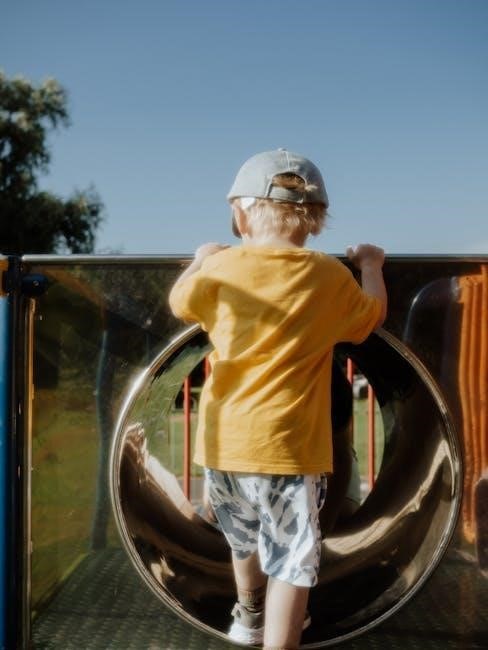
Understanding the Active Shooter Threat
An active shooter is an individual intent on causing harm, often targeting vulnerable populations․ Understanding this threat is essential for developing effective safety measures in schools․
2․1 Defining an Active Shooter
An active shooter is an individual actively engaged in killing or attempting to kill people in a confined and populated area, typically using firearms․ These incidents often occur with little to no warning, creating immediate danger․ Active shooters may be motivated by personal grievances, mental health issues, or ideological beliefs․ Schools must understand this definition to develop strategies for prevention, response, and recovery, ensuring the safety of students and staff during such critical events․
2․2 Common Scenarios and Warning Signs
Active shooter incidents in schools often unfold rapidly, with attackers targeting areas like classrooms or cafeterias․ Warning signs may include a student expressing violent thoughts, fascination with firearms, or displaying erratic behavior․ Identifying these indicators early is crucial for prevention․ Schools should monitor for threats, bullying involvement, or sudden behavioral changes in students․ Understanding these patterns helps in implementing timely interventions to mitigate potential risks and ensure a safer environment for everyone․
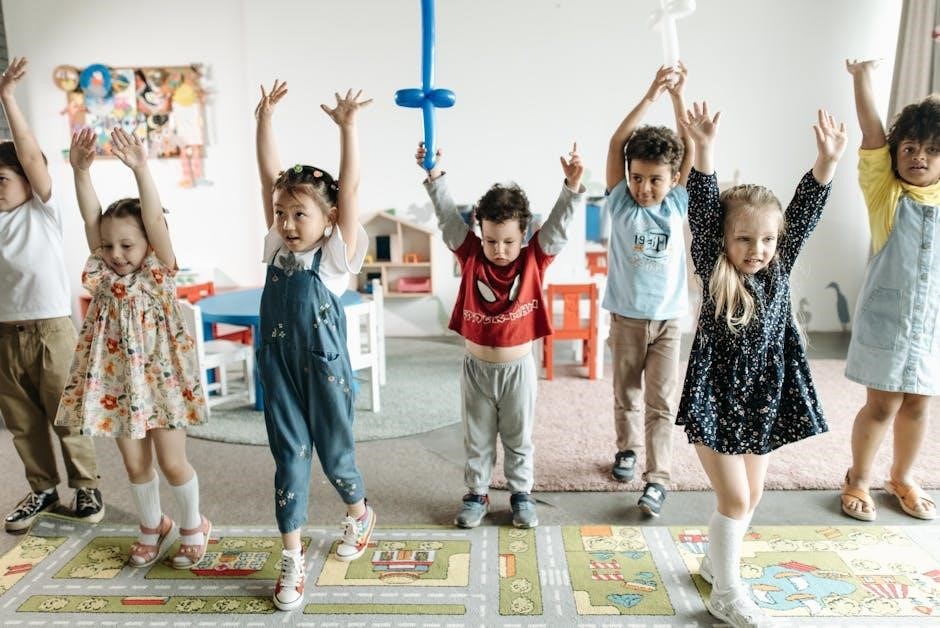
Prevention Strategies for High Schools
Effective prevention involves fostering a supportive school culture, identifying at-risk individuals, and implementing security protocols to address potential threats before they escalate, ensuring a safer learning environment․
3․1 Creating a Safe School Environment
Creating a safe school environment involves fostering a positive culture, encouraging open communication, and promoting inclusivity․ Establishing clear expectations for behavior and ensuring accessibility to mental health resources are crucial․ Schools should also maintain secure facilities, including controlled access points, surveillance systems, and well-lit areas․ Encouraging student-staff relationships and fostering a sense of belonging can help identify and address potential issues early․ Regular safety audits and emergency preparedness further enhance the overall security of the campus․
3․2 Identifying and Addressing At-Risk Individuals
Identifying at-risk individuals involves recognizing signs of behavioral changes, emotional distress, or social isolation․ Schools should establish threat assessment teams to monitor and intervene early․ Training staff to recognize red flags, such as increased aggression or withdrawal, is essential․ Providing access to counseling services and creating support networks can help address underlying issues․ Collaboration with families and mental health professionals ensures comprehensive support, reducing the likelihood of escalation and promoting a safer environment for all students and staff․
3․3 Implementing Security Measures
Implementing robust security measures is vital for preventing and mitigating active shooter incidents․ This includes securing entrances with ID checks, installing surveillance cameras, and ensuring emergency communication systems are in place․ Schools should conduct regular audits to identify vulnerabilities and address them promptly․ Access control systems, such as locked doors and electronic access, can deter unauthorized entry․ Training security personnel and ensuring they are visible on campus can also enhance safety; Regular drills and emergency response plans help prepare the school community for potential threats․

Preparing for an Active Shooter Incident
Preparing for an active shooter incident involves creating a comprehensive emergency plan, training staff and students, and ensuring awareness of potential threats and response strategies․
4․1 Developing an Emergency Action Plan
A comprehensive emergency action plan is essential for high schools to respond effectively to an active shooter incident․ The plan should outline evacuation routes, lockdown procedures, communication methods, and first aid locations․ It must be tailored to the school’s layout and updated annually․ Collaboration with local law enforcement and emergency services ensures alignment with professional protocols․ The plan should also include roles for staff, students, and first responders, with clear steps for execution during a crisis․ Regular training and drills are crucial to ensure preparedness․
4․2 Conducting Regular Drills and Training
Regular drills and training are vital to prepare students and staff for an active shooter situation․ These exercises should occur at least twice annually, involving simulations of realistic scenarios․ Training should cover evacuation procedures, lockdown protocols, and communication strategies․ Staff and students must understand their roles to act swiftly and calmly․ Including local law enforcement in drills enhances preparedness and ensures alignment with professional response tactics․ Continuous training helps reduce panic and ensures a coordinated response during an actual incident․
4․4 Educating Students and Staff
Educating students and staff is a cornerstone of active shooter preparedness; Training should focus on recognizing warning signs, understanding response options, and familiarizing individuals with safety protocols․ Age-appropriate materials ensure students grasp key concepts, while staff receive detailed guidance on leadership roles during incidents․ Regular refreshers and updates keep knowledge current, fostering a culture of awareness and readiness․ This empowerment enables the school community to respond confidently and effectively in high-stress situations, ultimately saving lives and reducing chaos during an event․
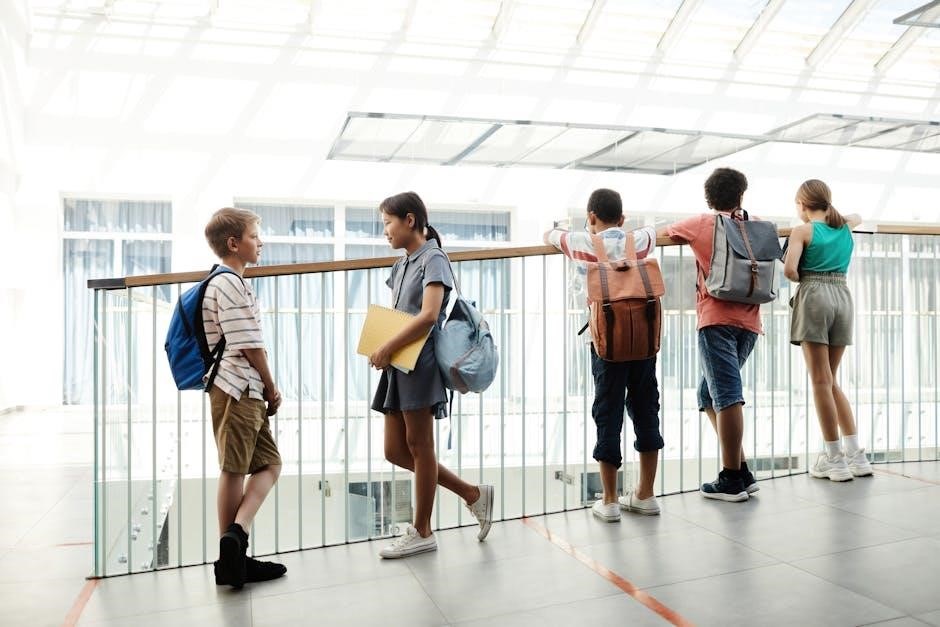
Responding During an Active Shooter Incident
Responding during an active shooter incident requires immediate action and adherence to established protocols to ensure safety and minimize harm to students and staff․
5․1 Run, Hide, Fight: The Recommended Response
The “Run, Hide, Fight” strategy is the recommended response during an active shooter incident․ If possible, evacuate the area quickly and safely․ If escape is not feasible, hide in a secure location out of sight, locking doors and silencing devices․ As a last resort, fight using available objects to defend yourself․ Prioritize survival and follow law enforcement instructions․ Understanding this protocol is crucial for making split-second decisions that can save lives during an active shooter situation․
5․2 Communicating with Law Enforcement
Effective communication with law enforcement is critical during an active shooter incident․ Students and staff should provide clear, concise information about their location, the shooter’s description, and the situation․ Always follow officers’ instructions without hesitation․ Ensure hands are visible and avoid sudden movements to prevent misunderstandings․ Pre-established communication protocols between schools and law enforcement can streamline responses․ Training staff on how to relay information accurately is essential for a swift and coordinated reaction during a crisis․
5․3 Evacuation Procedures
Evacuation procedures are vital during an active shooter incident․ Students and staff should exit the building quickly and calmly if it is safe to do so․ Know the nearest exit and avoid using elevators․ Do not confront the shooter; prioritize escape․ Assist individuals who may need help, but do not jeopardize your own safety․ Once outside, move to a designated assembly area and remain visible to law enforcement․ Stay low and avoid running in unpredictable directions to minimize risks․

After the Incident: Response and Recovery
After an active shooter incident, immediate medical aid and emotional support are critical․ Ensuring student and staff well-being while cooperating with authorities is essential for recovery and healing․
6․1 Providing Medical Assistance and Support
Immediate medical assistance is crucial after an active shooter incident․ Schools should have trained staff to provide first aid and coordinate with emergency medical services․ Triage systems help prioritize injured individuals, ensuring critical cases receive urgent care․ Additionally, psychological support must be readily available to address trauma and distress․ Collaboration between school staff, medical professionals, and counselors is essential to provide comprehensive care and promote recovery for all affected individuals․
6․2 Securing the Scene and Cooperating with Authorities
Securing the scene ensures safety and preserves evidence for investigations․ Schools must restrict access to authorized personnel only, preventing contamination of the area․ Cooperation with law enforcement is vital, as they lead the response and investigation․ Staff and students should remain calm, follow instructions, and avoid interfering with evidence․ Open communication with authorities helps streamline operations and supports a thorough review of the incident․ Documentation of actions taken is also crucial for accountability and future preparedness․
6․3 Addressing Emotional and Psychological Trauma
Addressing emotional and psychological trauma is essential after an active shooter incident․ Schools should provide immediate access to counseling and mental health resources for students and staff․ Trained professionals can help individuals process their experiences and cope with anxiety, grief, or PTSD․ Creating a supportive environment fosters healing and reassurance․ Ongoing check-ins and long-term support systems are critical to aid recovery and restore a sense of normalcy within the school community․
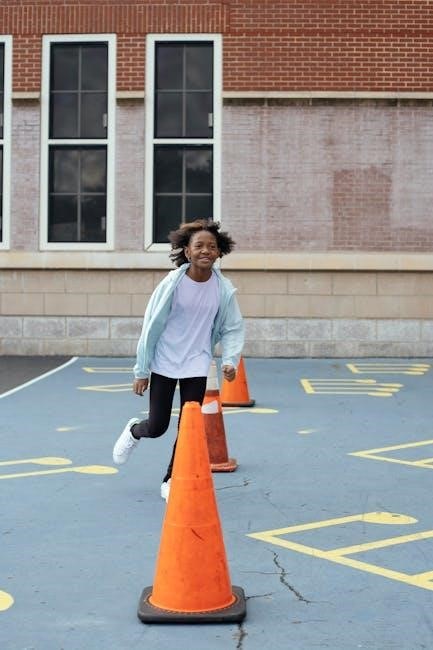
The Role of Law Enforcement and First Responders
The role of law enforcement and first responders is crucial in active shooter situations․ Their specialized training enables swift action to neutralize threats, protect lives, and ensure safety effectively․
7․1 Law Enforcement Protocols
Law enforcement protocols for active shooter incidents emphasize rapid response, prioritizing engagement of the shooter, and securing the area․ Officers are trained to enter immediately, locate the threat, and neutralize it․ Protocols include coordinating with school staff, ensuring communication with dispatch, and securing perimeter areas․ Police also work to evacuate victims and provide initial medical aid․ These procedures are designed to minimize casualties and restore safety quickly, aligning with school emergency plans and ensuring a unified response․
7․2 Coordination Between Schools and Emergency Services
Effective coordination between schools and emergency services is vital for a swift and organized response․ Regular joint training exercises ensure familiarity with school layouts and communication protocols․ Establishing a unified emergency plan and designating roles prevents confusion during incidents․ Schools should maintain open lines of communication, ensuring emergency services have access to floor plans and critical information․ This collaboration enhances response efficiency, minimizing risks and ensuring the safety of students and staff during active shooter situations․

Communication Strategies During and After the Incident
Clear communication is essential during and after an active shooter incident․ Schools must ensure timely updates, prevent misinformation, and coordinate messaging to maintain trust and order․
8․1 Effective Communication with Students, Staff, and Parents
Effective communication is vital to ensure safety and reduce panic․ Schools should establish clear channels for real-time updates, using SMS, email, and social media․ Staff should be trained to communicate calmly and accurately, while parents should receive consistent updates․ Transparent messaging helps maintain trust and prevents misinformation․ Schools must also prepare for post-incident communication to provide emotional support and updates, ensuring the community feels informed and supported throughout the process․
8․2 Managing Social Media and Public Information
Schools must manage social media and public information effectively during and after an incident․ Designate a spokesperson to provide consistent updates․ Monitor platforms to control misinformation and prevent panic․ Coordinate with law enforcement to ensure accurate information is shared․ Use official channels to communicate updates, and avoid speculation․ Address false rumors promptly to maintain trust․ Post-incident, use social media to share resources and support, fostering a sense of community and aiding in recovery efforts․

Post-Incident Review and Improvement
Post-incident review involves analyzing responses and identifying lessons learned to enhance future preparedness․ Schools should gather feedback, assess effectiveness, and implement improvements to strengthen safety protocols and communication․
9․1 Conducting a Debrief and Review
Conducting a debrief and review after an incident is essential for identifying strengths, weaknesses, and areas for improvement․ School administrators, security personnel, and first responders should participate․ Discussing the effectiveness of the emergency response, communication, and evacuation processes helps pinpoint gaps․ Documenting lessons learned ensures continuous improvement․ Gathering feedback from students, staff, and parents provides diverse perspectives․ This process fosters accountability, transparency, and collaboration, ultimately enhancing the school’s safety protocols and preparedness for future incidents․
9․2 Updating Policies and Procedures
Updating policies and procedures is crucial after a debrief to address identified gaps and improve future responses․ School administrators should collaborate with security experts and faculty to revise protocols․ Incorporating feedback from the debrief ensures practical, effective changes․ Updated policies should clarify roles, communication channels, and emergency procedures․ Regular reviews and staff training are essential to maintain preparedness․ Ensuring compliance with legal and safety standards enhances the overall security framework, fostering a safer environment for students and staff․
Preparedness and collaboration are key to safeguarding schools․ By fostering awareness, training, and strong community ties, high schools can create resilient environments for students and staff to thrive․
10․1 The Importance of Continuous Preparedness
Continuous preparedness is vital to ensure high schools remain proactive against evolving threats․ Regular drills, updated protocols, and community involvement foster resilience․ By prioritizing safety and emotional well-being, schools create a secure environment, empowering students and staff to respond confidently in crises․ Ongoing education and adaptation are key to safeguarding lives and maintaining a proactive approach to safety․
10․2 Empowering the School Community
Empowering the school community involves education, collaboration, and shared responsibility․ By fostering awareness and active participation, students, staff, and parents can contribute to a safer environment․ Encouraging open communication and providing training ensures everyone feels prepared and confident in their roles during emergencies․ A united and informed community strengthens resilience, creating a culture of safety and cooperation that extends beyond crisis situations, promoting a secure and supportive learning environment for all․

Additional Resources and References
This section provides recommended reading materials, safety manuals, and contact information for organizations specializing in active shooter preparedness and school safety initiatives․
11․1 Recommended Reading and Manuals
Key resources include the FEMA Active Shooter Guide, U․S․ Department of Education’s school safety toolkit, and the NRA’s School Shield program manual․ These materials provide comprehensive strategies for preventing and responding to active shooter incidents․ Additional resources include the National Association of School Psychologists’ guidance on mental health recovery and state-specific school safety manuals․ These publications offer evidence-based practices and actionable steps for educators, administrators, and law enforcement․
- FEMA Active Shooter Preparedness Guide
- U․S․ Department of Education Safety Toolkit
- NRA School Shield Program Manual
- NASP Mental Health Recovery Guidance
11․2 Contact Information for Safety Organizations
For additional support, contact organizations specializing in school safety: FEMA at ready․gov (1-800-621-FEMA), the Department of Homeland Security at dhs․gov (1-202-282-8200), and the National Association of School Psychologists at nasponline․org (1-301-657-0270)․ These organizations provide resources, training, and guidance for active shooter preparedness and response․ Utilize these contacts to strengthen your school’s safety measures and stay updated on best practices․
